What's New
Displaying results 1441 - 1450 of 4899

Resource | Presentations,
The objectives are to determine national prevalence estimates and related risk behaviors for HIV and syphilis among entertainment workers (EW), to provide data for program planning and management of STI and HIV prevention programs for EW and their clients and to evaluate HIV/syphilis prevalence and behaviors among EW.
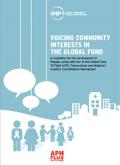
Resource | Guidelines,
This handbook aims to facilitate the active involvement of People Living with HIV (PLHIV) in the Global Fund/Global Fund to Fight AIDS, Tuberculosis and Malaria Country Coordination Mechanism (GFATM CCM). It outlines basic values and principles, providing practical information and tools which can be adapted to national contexts. It stresses the ongoing importance of PLHIV led communication, coordination and consultation, so that people most affected by the three diseases can continually make their voices heard and weigh in on important issues. The ultimate goal of PLHIV representation on CCMs is to ensure that GFATM financed programs are efficient, impactful and sustainable.

Resource | Publications,
The SDG Report presents an overview of progress toward achieving the Goals, which were unanimously adopted by countries in 2015. UN Under-Secretary-General for Economic and Social Affairs Liu Zhenmin said "Transitioning towards more sustainable and resilient societies also requires an integrated approach that recognizes that these challenges—and their solutions—are interrelated." As the global community moves forward to achieve the SDGs and address existing challenges, reliable, timely, accessible and disaggregated data is critically needed. This requires technology and innovation, increased resources and political commitment to build strong data and statistical systems in all countries.
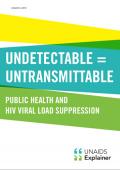
Resource | Publications,
Twenty years of evidence demonstrates that HIV treatment is highly effective in reducing the transmission of HIV. People living with HIV on antiretroviral therapy who have an undetectable level of HIV in their blood have a negligible risk of transmitting HIV sexually.
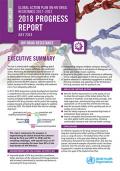
Resource | Publications,
This report summarizes the progress in implementing the Global Action Plan achieved during the first year (2017 to 2018) and the remaining challenges, with specific focus on 45 countries accounting for more than 85% of the total burden of HIV infection.
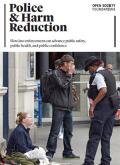
Resource | Guidelines,
Globally, law enforcement officers have grown increasingly frustrated with the limited effectiveness of traditional drug enforcement approaches that find them arresting or imprisoning individuals without significant impact on illicit drug trade or use. This is a briefing for law enforcement personnel around the world on how to incorporate, support, and create space for approaches that aim to increase public safety and health, reduce harm to people who use drugs, and provide law enforcement alternatives to common punitive models.
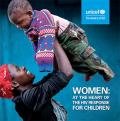
Resource | Publications,
UNICEF's new report, Women: At the Heart of the HIV Response for Children, highlights the sobering fact that, contrary to popular opinion, the AIDS crisis is far from over. Even as the disease beats a slow retreat due to the significant and commendable progress on many fronts in the last decade, it still strikes at people of all ages, including babies, young children and particularly adolescents. It continues to thrive among the marginalized and the powerless. Women and girls bear the brunt of the disease, both as the majority of those infected, and as those caring for others. The report contains 17 essays from women leaders in the fight against HIV, from activists living with HIV to prominent political and corporate figures.

Resource | Guidelines,
These guidelines aim to provide evidence-based recommendations on the care and treatment of persons diagnosed with chronic hepatitis C virus infection. They update the care and treatment section of the WHO Guidelines for the screening, care and treatment of persons with hepatitis C infection issued in April 2016. The 2017 Guidelines on hepatitis B and C testing update the screening section.
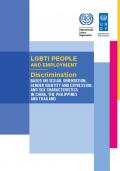
Resource | Publications,
According to a new United Nations study, high levels of lesbian, gay, bisexual, transgender and intersex (LGBTI) people – 21 percent of respondents in China, 30 percent in the Philippines and 23 percent in Thailand – reported being harassed, bullied or discriminated against by others while at work because of their sexual orientation, gender identity, expression and sex characteristics (SOGIESC).
The study was undertaken jointly by the United Nations Development Programme (UNDP) and the International Labour Office (ILO) and was launched today at the Queer Asia Conference hosted by the SOAS University of London. It involved a desk review as well as collection of quantitative data from 1,571 respondents and qualitative data from in-country focus group discussions with 151 participants. The report, entitled LGBTI People and Employment: Discrimination Based on Sexual Orientation, Gender Identity and Expression, and Sex Characteristics in China, the Philippines and Thailand, makes concrete recommendations for governments, the private sector, civil society, multilateral agencies and non-government organizations to take action to improve the situation for LGBTI people in employment settings.
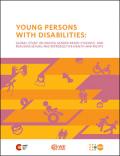
Global Study on Ending Gender-based Violence and Realizing Sexual and Reproductive Health and Rights
Resource | Publications,
Young Persons with Disabilities: Global Study on Ending Gender-based Violence and Realizing Sexual and Reproductive Health and Rights contains new qualitative, global research. This study provides an analysis on the situation of young persons with disabilities concerning discrimination and gender-based violence, including the impact on their sexual and reproductive health and rights. It also provides an assessment of legal, policy and programming developments and specific good practices in service delivery as well as best-standard prevention and protection measures. Finally, policy and programming recommendations are provided to assist in greater promotion of the rights of young persons with disabilities, with a particular emphasis on preventing and responding to gender-based violence, and realizing sexual and reproductive health and rights.





